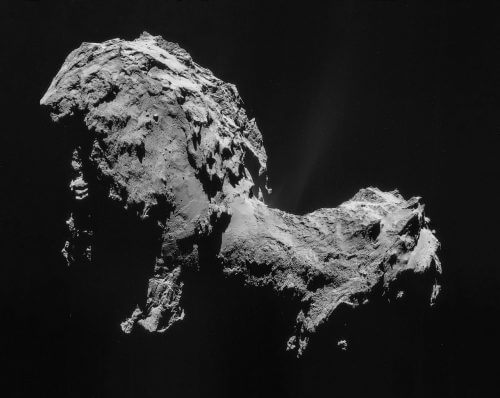An international team of researchers has shown that glycine, the simplest amino acid and an important building block of life, can be formed in the harsh conditions that exist in space
![The dusty region of the constellation Orion (a region known as the 'Sword of Orion') is illuminated in this stunning image taken from the European Space Agency's Herschel Space Laboratory. This primordial nebula is the largest and closest star-forming region to us, and is located about 1500 light-years away [Courtesy: ESA/NASA/JPL-Caltech]](https://www.hayadan.org.il/images/content3/2020/11/Dusty-Orion-777x7771-1-500x500.jpg)
[Translation by Dr. Moshe Nachmani]
The research findings, published in the scientific journal Nature Astronomy, suggest that glycine, and probably other amino acids as well, can be formed in the dense interstellar clouds long before these clouds crystallize into new stars and planets. Comets are the most primitive material in our solar system and reflect the molecular composition that existed when our sun and stars were just forming. The discovery of glycine in comet 67P/Churyumov-Gerasimenko and in samples returned to Earth by the "Stardust" probe suggests that amino acids, such as glycine, were formed long before the formation of the stars themselves. However, until recently, researchers believed that the formation of glycine required exposure to energy, a belief that placed restrictions on the environment in which this acid could be formed. As part of the new study, an international team of astrophysicists and astrochemists working in the Netherlands showed that glycine can be produced on the surface of frozen dust grains, in the absence of energy, using 'dark chemistry'. These findings contradict previous studies that suggested that ultraviolet radiation is required to create this molecule. One of the research partners explains: "Dark chemistry refers to chemistry that is carried out without the need for energetic radiation. In the laboratory, we were able to simulate the conditions that exist inside the dark interstellar clouds where frozen dust particles covered by thin layers of ice undergo reactions using atoms that hit each other while creating starting materials and active intermediates that connect together to form amino acids."
A discovery in Rosetta's comet

At first, the scientists showed that methylamine, the starting material for glycine discovered in comet 67P is indeed obtained under these conditions. Then, using a unique vacuum system, equipped with a series of sealed beams, and thanks to precise diagnostic measures, they were able to verify that the compound glycine could also be produced, and that the presence of frozen water was essential in this process. A follow-up study by astrochemical models verified the experimental findings and allowed the researchers to extend the data obtained from a typical single-day timescale in the laboratory to the interstellar conditions, which last millions of years. "From these findings we learned that small, but significant, amounts of glycine can form in space over time," said one of the researchers who was responsible for the models.
"The important conclusion derived from this study is that molecules considered to be the building blocks of life could have been formed already at a stage that was much earlier than the stage of formation of stars, suns and planets", claims one of the researchers. "Such an early formation of glycine in the developmental regions of star formation implies that this amino acid can indeed be formed in space and is even preserved within the ice structure." "From the moment of its formation, glycine can also become a starting material for other complex organic molecules, including of course the other amino acids known to us on Earth," said the chief researcher. "If the same mechanism is used, in principle, then other functional groups can be added to the structure of glycine, thereby creating other amino acids, such as alanine and serine in dark clouds in space. In the end, this rich stock of organic molecules will make up the various celestial bodies, such as comets, which will lead them to young planets, as may have happened on Earth and many other planets."

One response
It is also written in Genesis